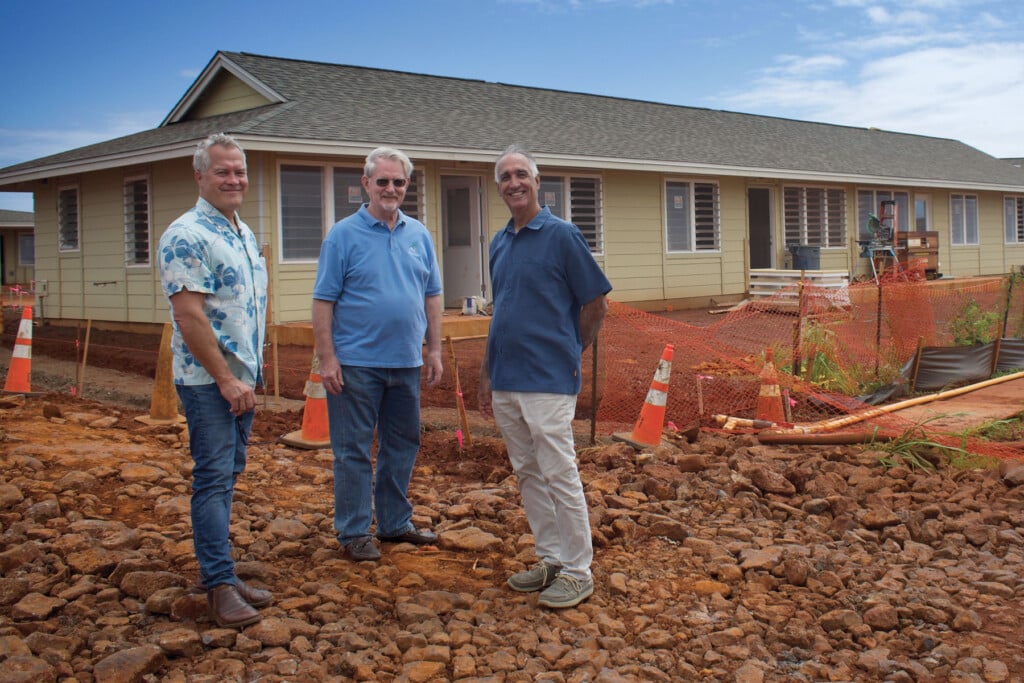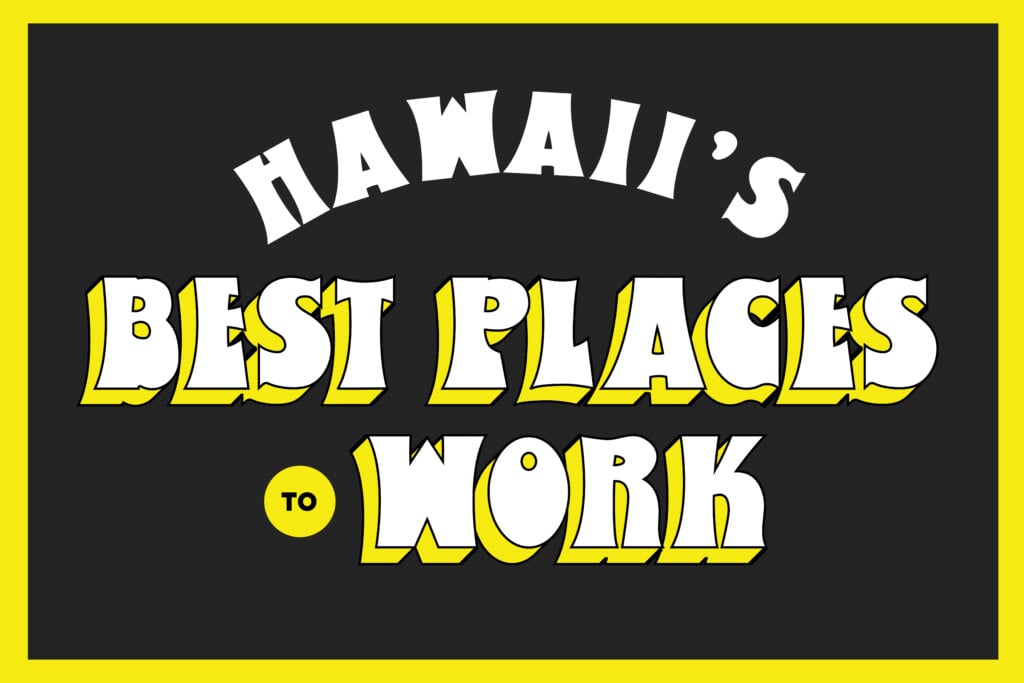Construction Industry Outlook 2022
Amidst a building boom, the construction industry has used innovation and creativity to successfully navigate material and labor issues.

Illustration: Getty Images
While the construction industry was categorized as essential since the beginning of the pandemic, freeing it from government shutdowns, it has faced many challenges and has had to stay nimble throughout changing Covid-19 protocols and impacts on the economy. From the tight labor market to supply issues and delays, the industry has navigated and innovated on multiple levels.
Since 1902, Hawaiian Dredging Construction Company, Inc. has provided the State of Hawai‘i with full-service general contracting services, including early projects such as dredging the entrance to Pearl Harbor and constructing the Ala Wai Canal. Gerry Majkut, President, states, “So far, in 2022, the construction market has continued to be impacted by inflation and supply chain issues. There have been significant cost increases in materials and lead times for materials. Hopefully, the markets will be able to adjust to alleviate this soon. At Hawaiian Dredging, we continue to look at innovative approaches to mitigate these issues as much as possible.”
Global supply chain disruptions are causing major delays in the shipping of building materials to the Islands, with long lead times, but rising costs are also a factor. “We’re already anticipating the cost of ready mix concrete to increase by 20% to 35% next year. The overall increase in costs coupled with rising interest rates could make some projects infeasible, particularly affordable housing projects, which were challenging for developers to bring to market even before the pandemic,” says Cheryl Walthall, the General Contractors Association (GCA) of Hawai’i’s Executive Director.
GCA has supported its members, including general contractors, subcontractors, equipment and material suppliers and associate members since 1932. “Contractors are currently dealing with the dilemma of striking the right balance between factoring in price escalations in their bids without pricing themselves so high that their proposals are not considered competitive – on government projects, the low bid wins the work. As a way to address these challenges, contractors are making a concerted effort to diversify their project portfolios, while controlling what they do have control over, namely cutting back on fixed overhead costs wherever feasible,” says Walthall.
Labor Shortage
Another hurdle has been a limited workforce, coupled with increased demands for housing and construction overall. “A portion of the experienced workers have retired, and some have found other work at what seems to be a faster rate than ever before,” says Tracy Lawson of Lawson & Associates.
“This has created an even greater need for safety training, mentoring, diligence, and good safe work processes to bring new employees on board and keep valuable experienced workers safe and engaged,” says Lawson.
“We have seen a significant shift in learners wanting to continue to attend virtually, some want back in the classroom, and more are open to self-paced computer-based training than ever before. As a result, we pivoted several years ago to certifications in virtual training, adult learning methods for online training, and upgrading all our materials.”
A Message From Tracy Lawson, President
Lawson & Associates Inc.
For 30 years, I have been discover-ing what it takes to create a success-ful safety culture. I have concluded that when technical knowledge (measured as IQ) and emotional intel-ligence (measured as EQ) are uniquely combined, it creates a powerful safety culture resulting in Safety Intelligence (measured as SQ).
According to the Cambridge English Dictionary, quotient as a noun means “the degree, rate, or amount of something.” Simply put, IQ + EQ = SQ. While IQ and EQ are critical, they are interdependent in creating an effective safety culture. One can achieve all the knowledge in the world; however, if they cannot communi-cate effectively and build trust, the knowledge will most likely fall on deaf ears. Conversely, suppose someone can develop relationships and trust but lacks the right knowledge. In that case, they can quickly erode trust and lead people to complete work in un-safe ways, or focused only on produc-tion. So, what is Safety Intelligence (SQ)? It is knowledge of the work and prioritizing people, which creates a culture of effective collaboration to achieve business improvement. SQ — an achievable goal all businesses and employees can share. The Safety Intelligence Institute exists to provide quality, relevant safety training that translates learning in the classroom to action in the workplace.
Lawson & Associates, Inc. is the home of the Safety Intelligence Institute. We specialize in business improvement through effective safety management systems. Contact us at www.lawsonsafety.com, www.safe-tyintelligenceinstitute.com/ or info@lawsonsafety.com to discuss how we can help you achieve safe production.
Future Thinking
What are the expectations in the construction industry? Walthall says, “We appear to be headed for an economic recession in the latter half of this year. In fact, by one indicator, we are already in a recession now since there have been two consecutive quarters of negative growth in G.D.P. However, it doesn’t quite feel like an economic recession – at least, not yet. Contractors remain busy and the labor market remains tight – the unemployment rate for the state was at 4.3% in June 2022.”
The bureaucratic processes that are required of developers are in need of an overhaul to streamline what can often be a costly and time consuming element in construction.
At the GAC, Walthall says, “This covers the full gauntlet developers need to run through in order to have their projects entitled — a process that can require approvals from and be subject to delays by the State Land Use Commission, the State Historic Preservation Division, County Councils, and County Permitting Departments, just to name a few…We can do better. Elected and appointed government officials need to make these issues a high priority because bureaucracy and delays add costs to projects that ultimately are borne by the end users of the project – whether they be homebuyers, small business owners, or taxpayers. Without change, housing is no longer affordable for most homebuyers, and we will continue to see the exodus of kamaʻāina families to other, more affordable states. We believe the government should streamline the project approval process and incentivize housing development so that we can effectively tackle Hawaii’s housing challenges.”
As the industry hires and trains new workers to meet demand, safety is at the core of construction. “We are committed to helping businesses improve by focusing on Safety Management Systems (SMS), focusing on processes that integrate safety and have input and buy-in from all key stakeholders and conducting relevant, quality training that converts from competency in the classroom to performance in the field,” says Lawson.
A Message From Hawaiian Dredging Company
Hawaiian Dredging Construction Company, Inc., founded in 1902, is celebrating its 120-year legacy of delivering countless construction and infrastruc-ture projects across our island state and Guam. Our experience and resources accumulated over the years are reflected through our company’s five divisions in Hawaii – Building, Commercial, Heavy (Civil), Power & Industrial, and Waterfront & Foundation spanning the gamut of major construction in Hawaii and our operations in Guam – HDCC Guam. That diversity allows Hawaiian Dredging to perform across the spec-trum of hospitality, retail/entertainment, commercial, residential, healthcare, educational, federal, and infra-structure sectors. Our company’s revenue increased in 2021, exceeding $600M.









